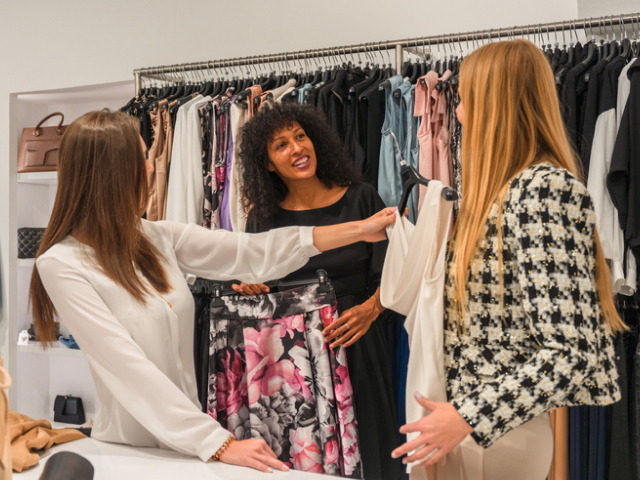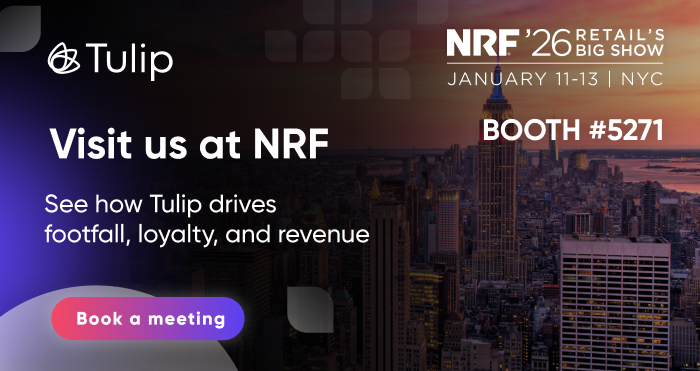The key benefits and outcomes of clienteling
Clienteling is essential in modern retail because it is the strategic practice of using detailed customer information to build strong, long-term, 1:1 relationships, which directly increase sales and loyalty.
Today’s customers expect personalization; clienteling transforms a simple transaction into a memorable, valuable, and repeatable experience. This personalized approach is how brands stand out, retain their best customers, and grow their overall business.
This blog focuses on the role of clienteling in retail, but to learn more about the fundamentals of clienteling, check out our Beginner’s guide to clienteling in 2025.
What are the biggest advantages of clienteling for retailers and customers?
Clienteling offers significant qualitative advantages that benefit both the retailer and the customer. These key advantages center on making the customer feel known, understood, and valued, which builds a lasting emotional connection to the brand.
How does clienteling improve the customer experience?
Clienteling improves the customer experience by allowing sales associates to deliver interactions that are personal, relevant, and timely, which makes the customer feel special and understood.
Instead of just trying to sell an item, the associate can recall past purchases, remember preferences (like a favorite color, fabric, or style), and suggest products or services that genuinely fit the customer’s life. This creates a more positive and memorable shopping journey, whether it happens in a store or through a digital message.
Can clienteling really make customers more loyal?
Yes, clienteling is one of the most powerful tools for fostering customer loyalty and retention because it focuses on building strong, long-term relationships instead of just chasing short-term sales. By regularly and thoughtfully reaching out (e.g., sending a text about a new product release that matches their profile or a birthday discount), clienteling converts casual, one-time shoppers into loyal brand advocates that make 49% more purchases on average than customers who aren’t clienteled.
This is financially crucial for any business, as research shows it costs 5 to 25 times more money to acquire a new customer than it does to keep an existing one. Clienteling significantly reduces your customer acquisition costs (CAC) and increases customer lifetime value (CLTV).
How does clienteling help a brand compete against bigger stores?
Clienteling offers powerful competitive differentiation by enabling a brand to stand out in saturated markets, especially against massive, non-personal large retailers. Big box stores rely on scale and low prices, but they often struggle to offer genuinely personalized service.
Clienteling allows smaller or premium brands to provide a level of individual attention and expertise that large companies simply cannot replicate, turning great service into a unique selling proposition and a key reason why customers choose them over the competition.
Why is trust and personalization so important in clienteling?
Trust and personalization are fundamental to successful clienteling because they work together to create a safe and valuable shopping relationship. Personalization is the act of showing the customer you understand their unique needs, behavior, and preferences. However, true trust is built through the discrete and secure use of the personal data the customer shares. For instance, knowing a customer only buys sustainable goods or is currently interested in professional work attire builds trust because your recommendations are accurate, useful, and show respect for the privacy of their information.
How does clienteling help retailers focus their efforts and resources?
Strategic customer segmentation helps retailers focus their efforts by ensuring the most valuable customers get the high-touch attention they deserve. Clienteling is specifically designed to identify and engage with VIPs—the top-tier customers who generate the most revenue—allowing the sales team to prioritize their time and resources. Instead of treating everyone the same, clienteling allows associates to deliver ultra-personalized outreach (like private previews or special access) to the VIP segment, maximizing customer retention and revenue from the business’s most critical relationships.
Can clienteling help a store avoid running out of popular items?
Yes, clienteling contributes to optimized inventory management because the detailed information sales associates gather about customer demand and preferences acts as powerful market intelligence.
When associates track what customers are asking for, waiting for, or are disappointed to see out of stock, this data feeds back into forecasting systems. This leads to more accurate planning, smarter merchandising, fewer stockouts of popular products, and less money wasted on slow-moving inventory.
What specific results and financial improvements come from clienteling?
Clienteling doesn’t just feel good—it produces clear quantitative outcomes and financial returns that are essential for proving its value as a retail strategy.
According to results from our recent Tulip Clienteling benchmark report, these measurable results show that personal, 1:1 service is a direct driver of revenue, improving core retail metrics like conversion rates and how much money customers spend— converting 5-17x better and spending 63% more on average.
How much better are clienteling messages at converting to sales?
Clienteling communications are much more effective at increasing conversion than generic messages. For example, personalized communications sent by a sales associate—messages tailored to the customer’s product and channel preferences—convert to a sale at a rate that is 5-17x better than standard corporate marketing emails. This high conversion rate comes from the message’s personal relevance and the trust built by the individual associate.
Does clienteling actually lead to more purchases overall?
Yes, clienteling directly contributes to driving sales by encouraging greater purchasing frequency. Customers who actively engage in clienteling communications make 49% more purchases on average in six months compared to those who do not receive clienteling outreach. This consistent engagement keeps the brand top-of-mind and moves the customer further down the path to becoming a loyal advocate.
Can personalized service make customers spend more on a single visit?
Absolutely. Clienteling has a massive impact on boosting Average Order Value (AOV), which means customers spend more money each time they make a purchase. When compared to the AOV of transactions that did not involve clienteling, personalized service can increase the AOV by as much as 194%. This happens because the associate can recommend relevant add-ons, higher-value items, or complete outfit solutions based on a deep understanding of the customer’s style and past behavior.
What is the main takeaway about the future of clienteling?
The main takeaway is that clienteling is not just a “nice-to-have”; it’s a strategic imperative for sustained retail success. In many ways, retention is the new acquisition.
In the age of digital noise and endless choices, clienteling is the ultimate differentiator.
By combining the emotional power of personalized service with clear, measurable financial results, clienteling solidifies the human connection in retail and secures a competitive edge, making it an indispensable practice for 2025 and beyond.
Learn more
To learn more about clienteling as a business practice, check out this Beginner’s guide to clienteling in 2025.
If you’re ready to see how clienteling can transform your business, book a demo with our team today to see Tulip Clienteling in action.


